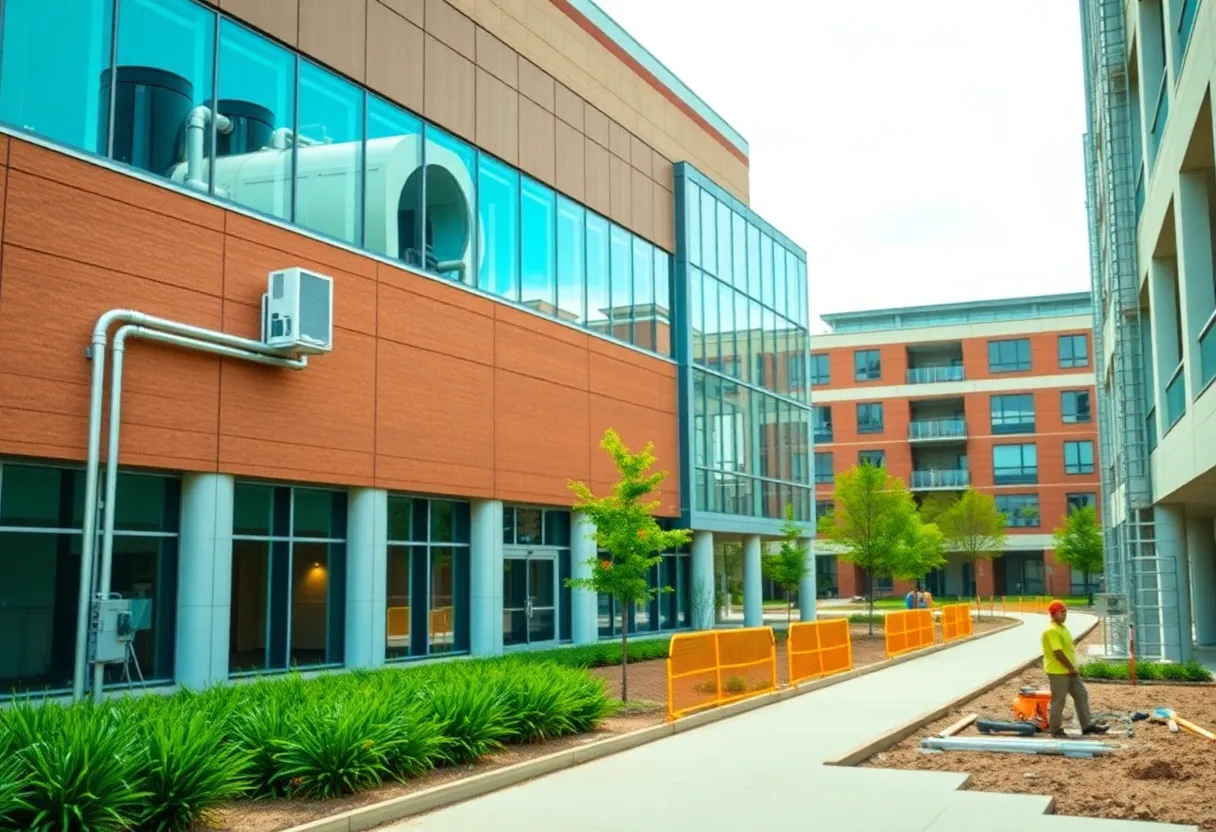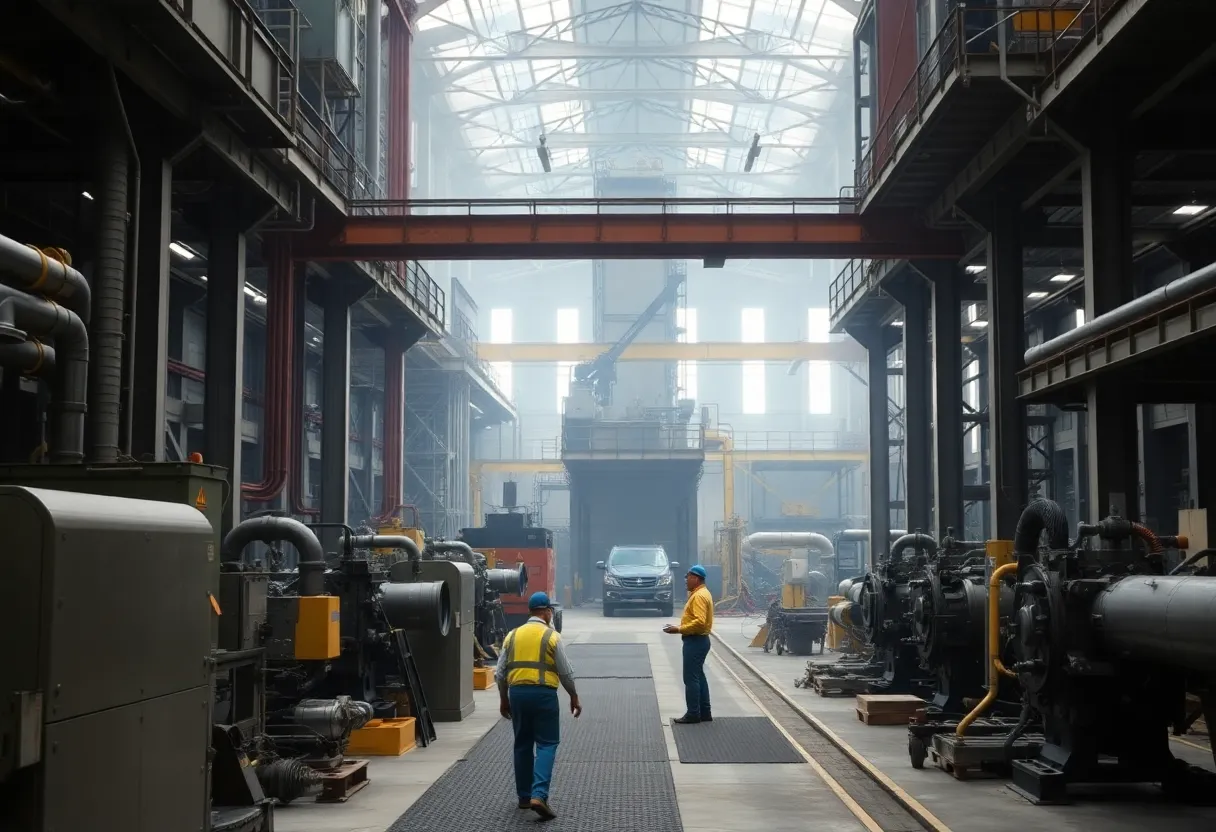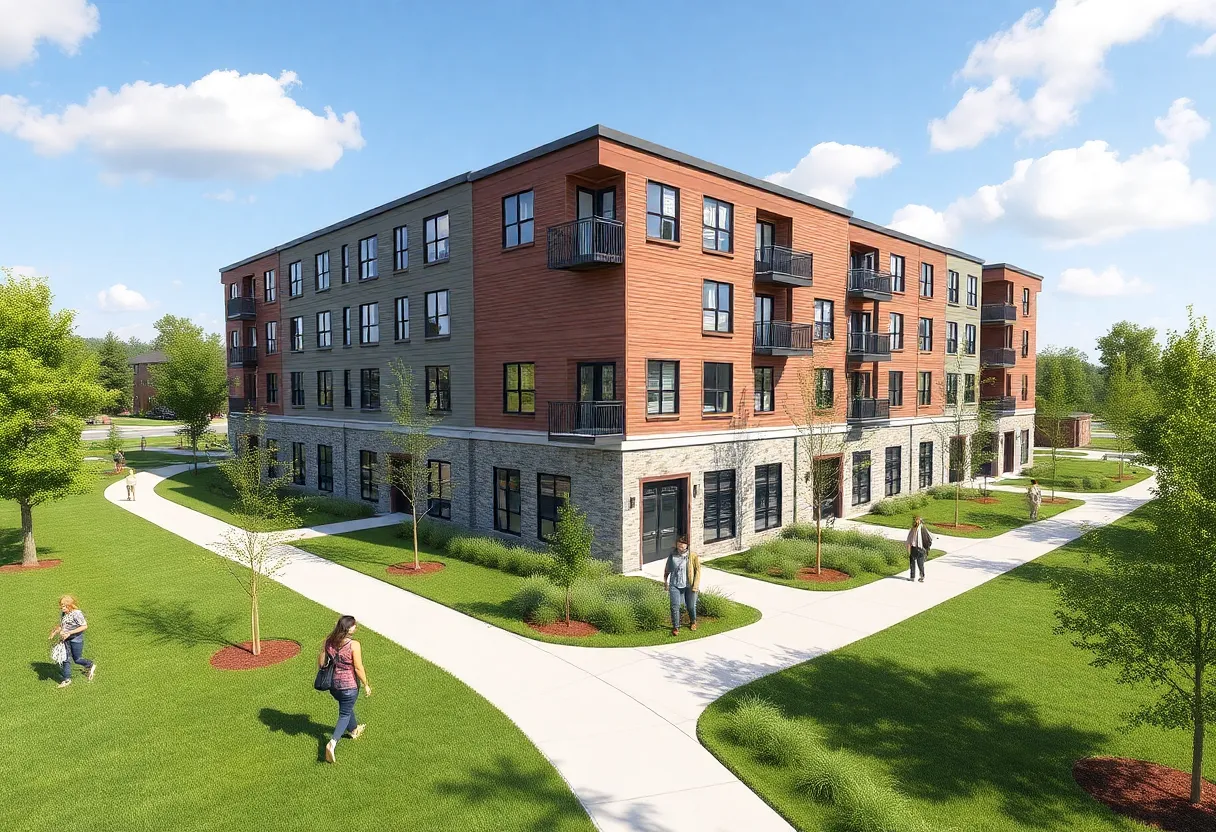Chicago, Illinois, September 11, 2025
News Summary
The University of Illinois–Chicago has initiated a $30 million energy conservation project to upgrade HVAC systems in University Hall and the Behavioral Sciences Building. This effort aims to enhance reliability, cut operational costs, and reduce greenhouse gas emissions significantly. The project, financed through an energy savings performance contract, is expected to yield around $1 million in annual savings and mitigate approximately 2,100 metric tons of CO2 emissions each year as part of the university’s Climate Commitment Action Plan.
University of Illinois–Chicago launches $30 million HVAC upgrade to cut costs and emissions
The University of Illinois–Chicago has begun a $30 million energy conservation project with a private energy partner to replace aging heating, ventilation and air conditioning systems in two core campus buildings. The work is focused on University Hall and the Behavioral Sciences Building, aiming to improve reliability, reduce operating costs and lower greenhouse gas emissions.
Quick facts
- Project cost: $30,000,000
- Buildings: University Hall and Behavioral Sciences Building
- Key upgrades: 24 energy-efficient air handling units and modern controls
- Projected annual savings: Approximately $1,000,000
- Estimated emissions reduction: About 2,100 metric tons CO2 per year
- Schedule: Broke ground in May; roughly 18 months to complete
- Financing: Energy savings performance contract (ESPC)
What is happening and why it matters
The initiative replaces mechanical systems that are now more than 60 years old—well past the typical 25–30 year service life described by industry standards. The replacement includes installing 24 energy-efficient air handling units and updating heating and cooling controls with devices such as variable frequency drives and internet connectivity for remote monitoring. These changes are designed to improve indoor comfort and operational reliability while lowering energy consumption and maintenance needs.
Funding and delivery method
The project is financed through an energy savings performance contract (ESPC), which allows the university to pay for the work over time from the savings generated, avoiding a major immediate capital outlay. The university previously used the same financing approach on a $65 million project, making this a familiar delivery method for campus upgrades.
Operational and environmental impacts
The upgrades are expected to yield about $1 million per year in combined energy and operational savings and to reduce campus greenhouse gas emissions by roughly 2,100 metric tons of CO2 annually. These outcomes support the university’s broader Climate Commitment Action Plan for achieving net zero greenhouse gas emissions by 2050.
Construction approach and disruption management
To limit disruption, construction sequencing has been planned to take floors offline in stages. In University Hall, crews will temporarily shut down three floors at a time and staff will be relocated as needed. The phased approach is intended to keep classrooms and administrative functions operating while crews replace mechanical equipment.
Technology and maintenance improvements
The project adds modern control systems and internet-enabled monitoring, allowing building engineers to review system performance remotely and respond to issues more quickly. The new equipment will expand maintenance capacity and simplify routine oversight, reducing the need for continuous on-site manual monitoring that had previously required a stationary engineer on duty 24/7 due to system unreliability.
Timeline and project team
Groundbreaking took place in May and the work is scheduled to take about 18 months. The energy services company selected for the contract is the project partner handling design, installation and performance guarantees under the ESPC model. Active collaboration between the energy partner and the university’s facilities team has been emphasized throughout planning to maintain clear communication and smooth execution.
Context and challenges
The upgrade addresses common deferred maintenance issues faced by budget-constrained higher education institutions. By using an ESPC, the university can tackle critical mechanical failures and upgrade aging infrastructure without a large upfront capital appropriation, while securing predictable savings and measurable emissions reductions.
Campus significance
The project targets two high-use buildings. University Hall, constructed in the 1960s, houses key administrative offices while the Behavioral Sciences Building is the campus’s largest classroom facility. Improving these spaces is expected to boost building performance where it affects campus operations the most.
Frequently Asked Questions
What buildings are included in the project?
The work covers University Hall and the Behavioral Sciences Building.
How much does the project cost and who is paying?
The project budget is $30 million. It is being financed through an energy savings performance contract, which spreads payments over time and uses projected energy savings to cover costs.
What upgrades are being installed?
Installations include 24 energy-efficient air handling units, modern heating and cooling controls, variable frequency drives and internet connectivity for remote monitoring.
What operational impacts can campus users expect?
To limit disruption, construction will shut down three floors at a time in University Hall with temporary staff relocations. Sequencing aims to keep most campus activity running while work proceeds.
What are the expected savings and environmental benefits?
The project is projected to save about $1 million per year in energy and operational costs and reduce greenhouse gas emissions by roughly 2,100 metric tons of CO2 annually.
How long will the project take?
Ground was broken in May and the project is expected to take approximately 18 months to complete.
Key project features
| Feature | Details |
|---|---|
| Project cost | $30,000,000 |
| Target buildings | University Hall; Behavioral Sciences Building |
| Equipment to be installed | 24 energy-efficient air handling units; variable frequency drives; modern controls with internet connectivity |
| Expected annual savings | Approximately $1,000,000 |
| Estimated emissions reduction | About 2,100 metric tons CO2 per year |
| Financing | Energy savings performance contract (ESPC) |
| Timeline | Broke ground in May; ~18 months to complete |
| Existing system condition | Mechanical systems over 60 years old; previous continuous on-site monitoring by a stationary engineer |
| Disruption mitigation | Shut down three floors at a time in University Hall; temporary staff relocations |
| Alignment with campus goals | Supports Climate Commitment Action Plan toward net zero emissions by 2050 |
Deeper Dive: News & Info About This Topic
Construction IL Resources
Additional Resources
- Facilities Dive: University of Illinois–Chicago tackles deferred maintenance
- Google Search: University of Illinois Chicago HVAC upgrade
- Business Wire: Ameresco Expands Collaboration with UIC
- Encyclopedia Britannica: Energy efficiency
- Investing.com: Ameresco launches $30 million energy upgrade project
- Google Scholar: Energy savings performance contract





